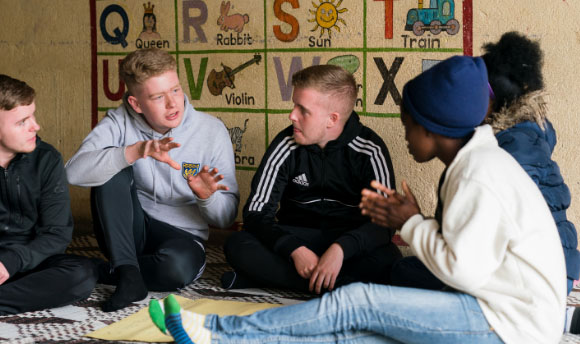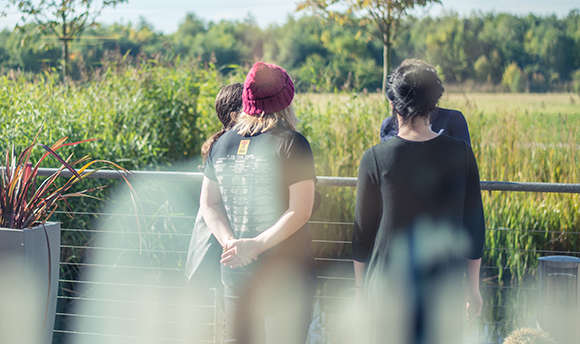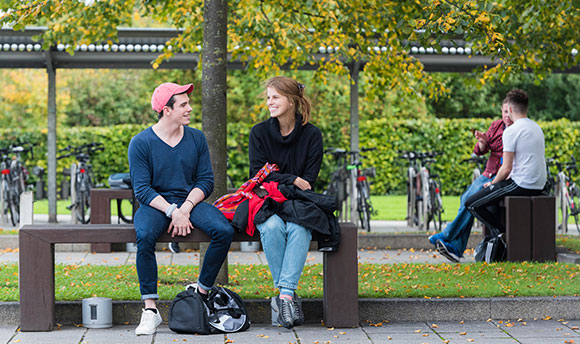The world is suddenly online: and the use of screen-based communication has increased exponentially: Indeed, even the ageing medium of television has turned into an ersatz supply teacher, with many programmes targeted towards both children and adults. In Channel 4s Grayson’s Art Club the artist Grayson Perry undertakes new projects and reviews artistic submissions from the general public, musing upon the role of art in a time of lock-down. “Art,” he said on the 27th April’s screening, “is important….art puts emotions into concrete.”
It certainly is a difficult time to be an artist: as precarious workers with little regular income at the best of times, this crisis has seen festivals cancelled and galleries/museums shut.
Indeed, cultural managers and artists have attempted to instigate their own screen-based dissemination with creative and cultural projects occurring on Twitter, Instagram and other platforms. While it is important to still share our intangible culture with our quarantined community, it begs the question if culture can be effectively communicated onto our screens and handheld devices. Nicholas Berger argues that it cannot. Culture, he suggests, is essentially an embodied process and it is a misguided strategy to focus on translating our expressions to the screen. Part of the reason we go to see art or theatre is to have a shared physical experience with others in the room. It’s not that cultural product is inconsequential - not at all! - but that the shared embodied nature of an artistic experience is equal and as essential. Culture is the excuse for us to gather. Or rather: culture exists because we gather together. As Chinua Achebe writes in “Things Fall Apart” “A man who calls his kinsmen to a feast does not do so to save them from starving. They all have food in their own homes. When we gather together in the moonlit village ground it is not because of the moon. Every man can see it in his own compound. We come together because it is good for kinsmen to do so.”
Coming together is important. It helps us to occupy our time in ways in which we each individually identify as meaningful. Coming together can positively influence and support our own health and well-being. As Brendan McCormack suggests, recognising and valuing healthful lives is, in part, to understand the importance of the quality of our relationships and how this influences our social engagement with others. Robert Waldinger agrees; good relationships, across our lifespan, keep us happier and healthier. These ‘good’ relationships can be nurtured through collective occupations, suggested by Kantartzis & Molineux (external PDF) as people or communities coming together such as joining celebratory occasions, informal encounters in public spaces, or perhaps through cultural events.
The potential for these collective occupations however are now, at least temporarily, gone… Missing, as part of our everyday lives due to COVID19 and lockdown. Instead we are encouraged to be together digitally whilst simultaneously trying to avoid zoom fatigue and computer vision syndrome. Andy Cole, a former Manchester Utd football player, captured it well: “When you have to stay indoors and you can’t socialise, it’s really tough...I’ve been living on my own the past two years. I used to find it really comforting to go see someone for a chat. It got me out of the house. Yes, we can have as many Zoom calls as we like but it's not the same as being out, speaking to people, having a laugh”.
We have come together recently - albeit digitally - to explore the limits of coming together digitally. In a self-directed research study, we are trying to use the online medium in a different fashion and instead of being ‘receivers’ of digital images, we are in the midst of a project where we are ‘producers’ of collective photographs, using photography as a method to come together and record our emotions and experiences as we transition through lockdown.
To do this, we began by individually taking photographs each per week that captured meaningful experiences - shared meals, a memory, a daily workout, etc. We shared and discussed with each other, noticing common themes, such as a focus on memories and thinking about important times in the past, and enjoying these memories, as well as the sense of our bodies as we move less-and-less. As the research progresses, we have started recreating each other’s photographs in order to explore the different thoughts, feelings and evocations that occur as we try to recreate the meaningful images of someone else. Already, the results are proving exciting and other groups are taking on these ideas as ways of collectively working.
The research is ongoing, and findings continue to progress, including to evolve a methodology to try to be together - to form a collective occupation - when we can’t actually be together.
This practice-based research aligns with the research occurring in both the Health and Social Science schools of QMU and as such, this project represents not just a coming together of two people but also the combining of different realms of knowledge. It is comforting, that in these isolated times, people are reaching out across the divides to find collective points of shared meaning.
Stay tuned for further outcomes!







